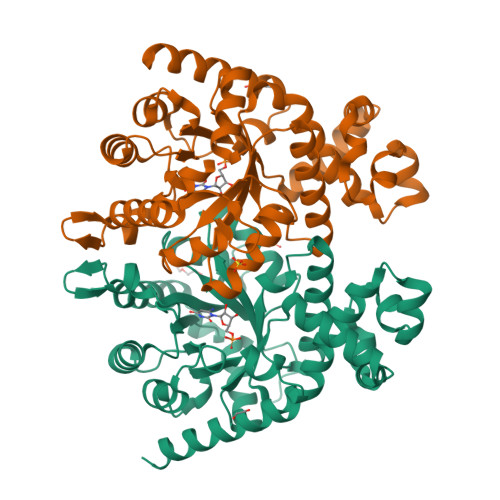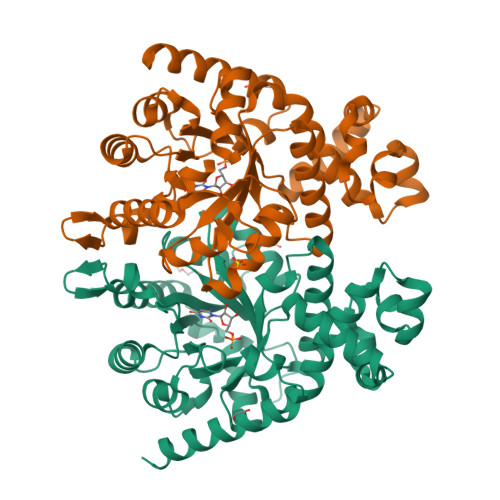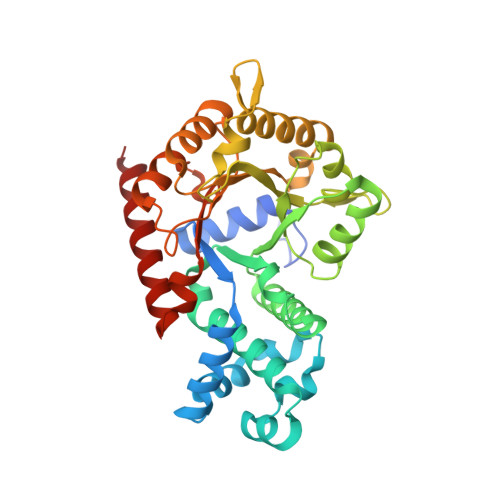Structure-Activity Relationships of C6-Uridine Derivatives Targeting Plasmodia Orotidine Monophosphate Decarboxylase.
Bello, A.M., Poduch, E., Liu, Y., Wei, L., Crandall, I., Wang, X., Dyanand, C., Kain, K.C., Pai, E.F., Kotra, L.P.(2008) J Med Chem 51: 439-448
- PubMed: 18189347
- DOI: https://doi.org/10.1021/jm7010673
- Primary Citation of Related Structures:
2Q8Z, 2QAF, 3BAR - PubMed Abstract:
Malaria, caused by Plasmodia parasites, has re-emerged as a major problem, imposing its fatal effects on human health, especially due to multidrug resistance. In Plasmodia, orotidine 5'-monophosphate decarboxylase (ODCase) is an essential enzyme for the de novo synthesis of uridine 5'-monophosphate. Impairing ODCase in these pathogens is a promising strategy to develop novel classes of therapeutics. Encouraged by our recent discovery that 6-iodo uridine is a potent inhibitor of P. falciparum, we investigated the structure-activity relationships of various C6 derivatives of UMP. 6-Cyano, 6-azido, 6-amino, 6-methyl, 6- N-methylamino, and 6- N, N-dimethylamino derivatives of uridine were evaluated against P. falciparum. The mononucleotides of 6-cyano, 6-azido, 6-amino, and 6-methyl uridine derivatives were studied as inhibitors of plasmodial ODCase. 6-Azidouridine 5'-monophosphate is a potent covalent inhibitor of P. falciparum ODCase. 6-Methyluridine exhibited weak antimalarial activity against P. falciparum 3D7 isolate. 6- N-Methylamino and 6- N, N-dimethylamino uridine derivatives exhibited moderate antimalarial activities.
Organizational Affiliation:
Center for Molecular Design and Preformulations and Division of Cell and Molecular Biology, Toronto General Research Institute/University Health Network, MaRS/TMDT, Toronto, ON, Canada.






















